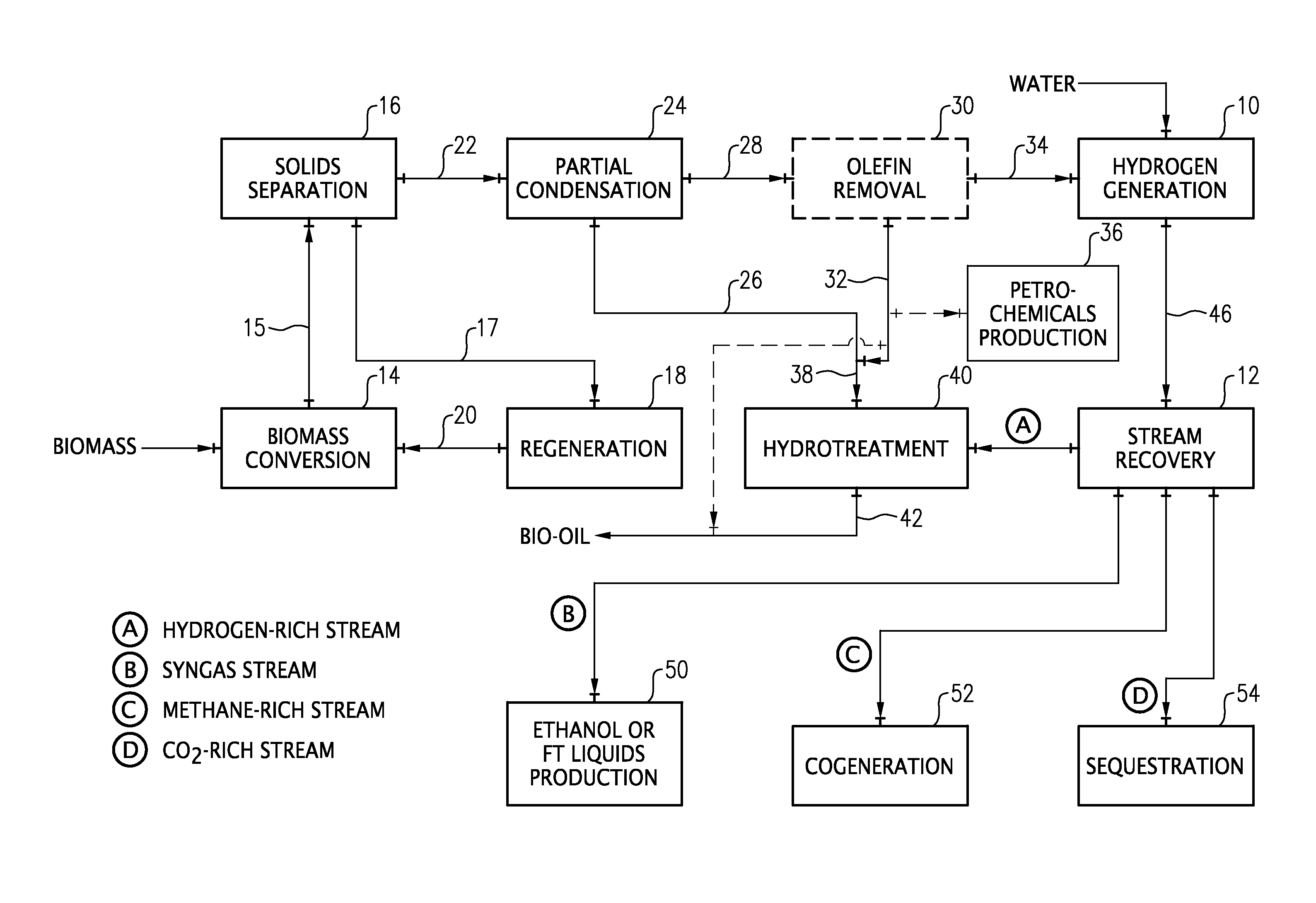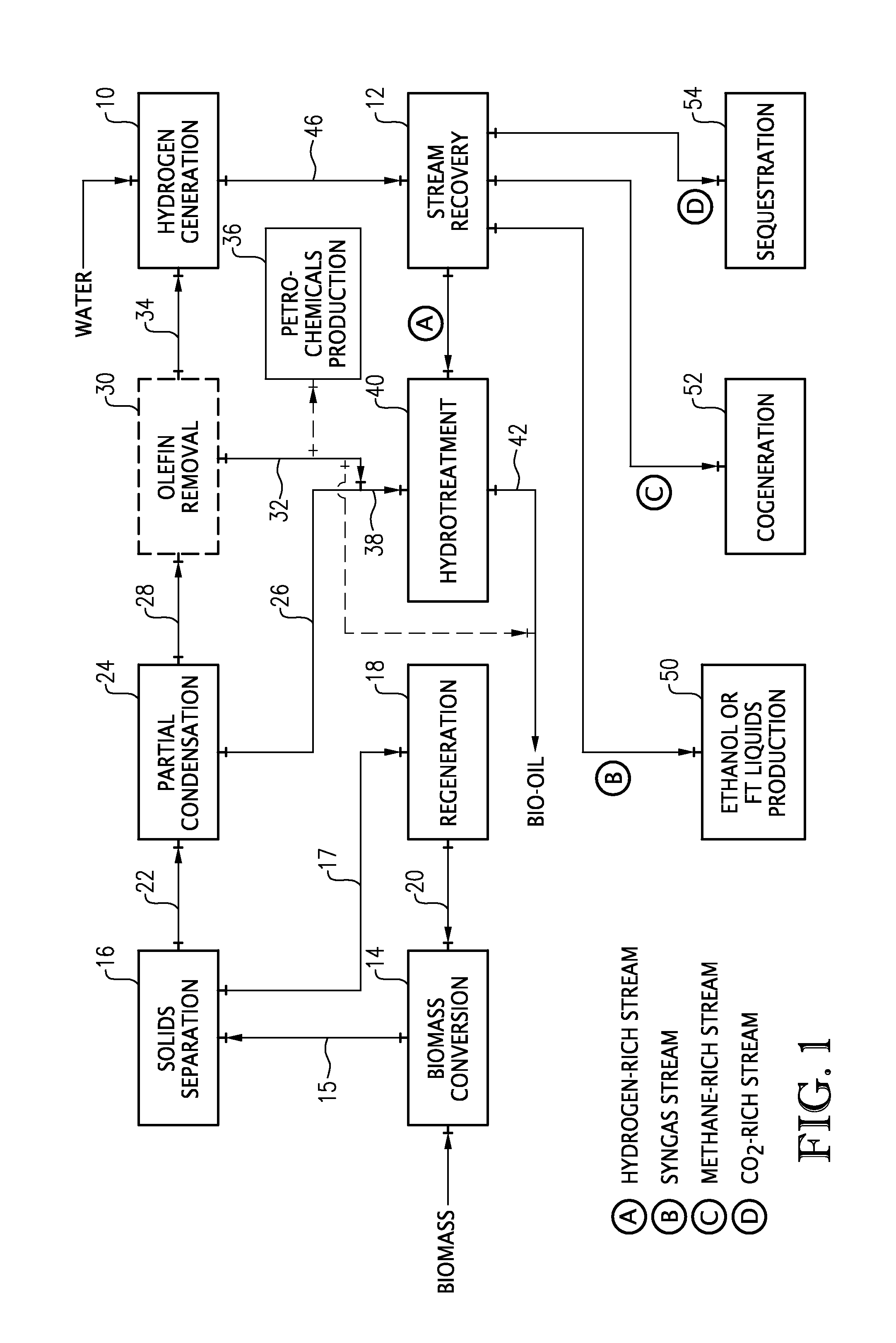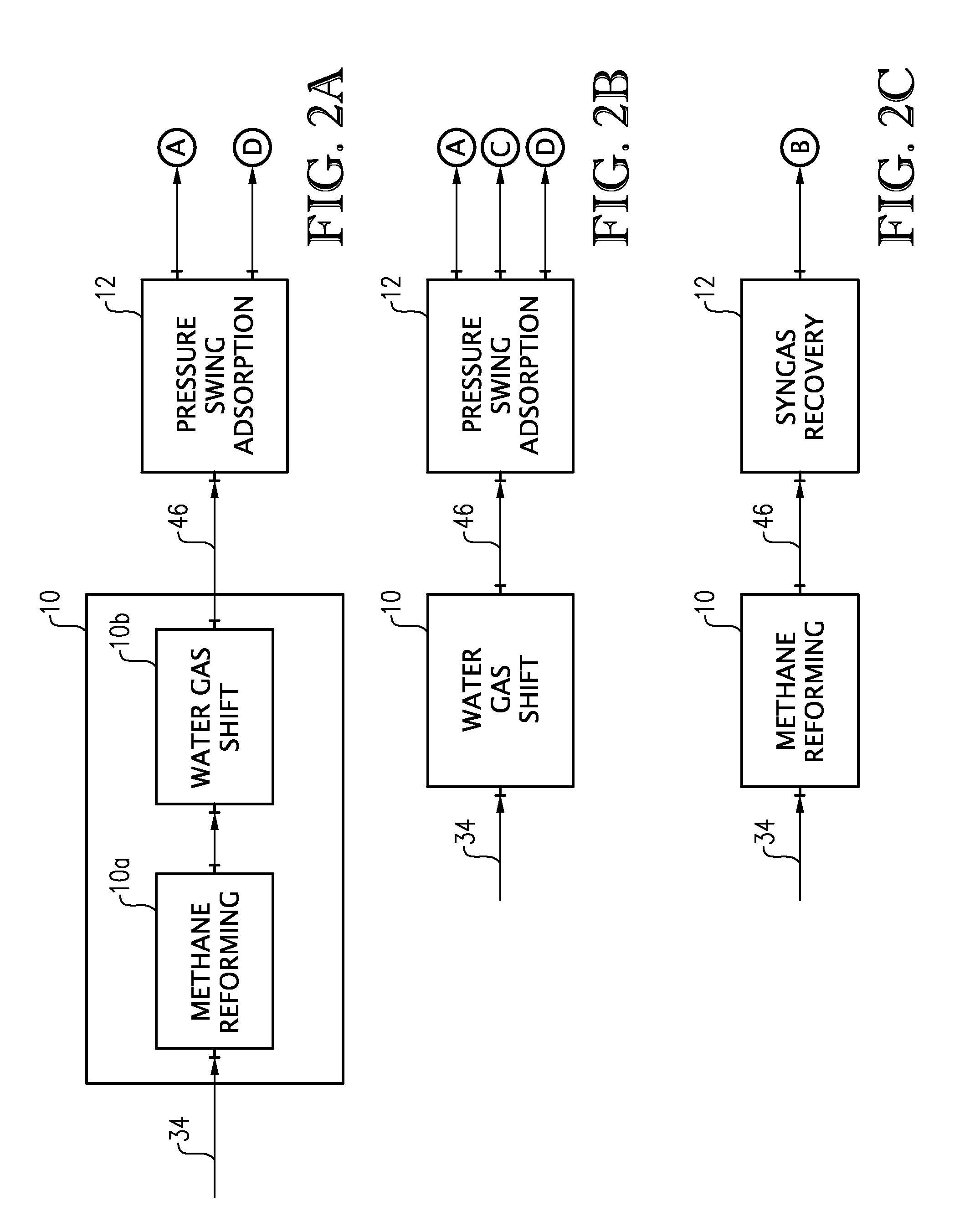Bio-oil production with optimal byproduct processing
- Summary
- Abstract
- Description
- Claims
- Application Information
AI Technical Summary
Problems solved by technology
Method used
Image
Examples
example
[0049]For the separate runs listed in Table 1 below, wood was charged to a pyrolysis reactor for contact with kaolin and zeolite catalysts at different inlet riser reaction temperatures. Results from the runs are set out in Table 1 below.
TABLE 1LowHighLowHighSeveritySeveritySeveritySeverityKaolinKaolinZeoliteZeoliteRiser Inlet Temp. (° F.)1230126512301265Cat / feed ratio (wt / wt)13.531.213.322.9CO / Bio-oil ratio (wt / wt)0.716.411.004.09Methane / Bio-oil ratio (wt / wt)0.070.700.050.32Hydrogen / Bio-oil ratio (wt / wt)0.010.090.010.03
[0050]As can be seen from Table 1 above, as the severity of the biomass conversion is increased (increased temperature and increased catalyst to feed ratio), the weight ratios of CO, methane, and hydrogen to bio-oil all increase. In particular, the increases in CO and methane resulting from the high severity runs are sufficient to generate enough hydrogen to adequately hydrotreat the produced bio-oil without requiring hydrogen from external sources.
PUM
 Login to View More
Login to View More Abstract
Description
Claims
Application Information
 Login to View More
Login to View More - R&D
- Intellectual Property
- Life Sciences
- Materials
- Tech Scout
- Unparalleled Data Quality
- Higher Quality Content
- 60% Fewer Hallucinations
Browse by: Latest US Patents, China's latest patents, Technical Efficacy Thesaurus, Application Domain, Technology Topic, Popular Technical Reports.
© 2025 PatSnap. All rights reserved.Legal|Privacy policy|Modern Slavery Act Transparency Statement|Sitemap|About US| Contact US: help@patsnap.com



